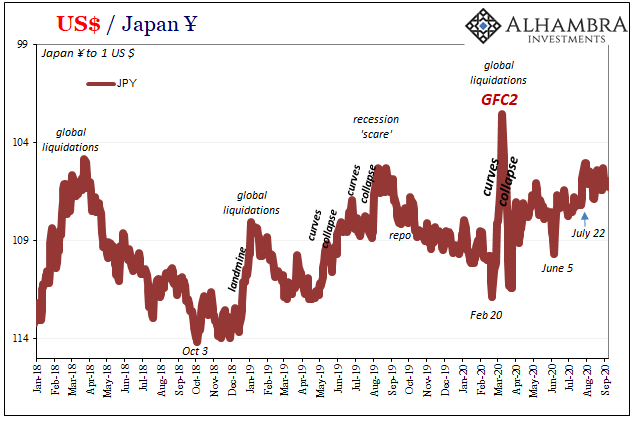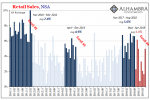The US dollar rose against all the major currencies last week. The importance of the price action does not lie with the magnitude or the breadth of the advance. Instead, the two takeaway technical observations are 1) the seemingly one-way market for euro and yen ended and 2) the dollar-bloc currencies appear to have put in at least a medium-term top.
We hasten to note that the fundamental developments have not shifted a more dollar-friendly near-term direction. Investors, judging from the Fed funds futures market, continue to see practically no chance of a June hike. The US two-year premium over Germany narrowed four bp and eight in the past two weeks.
The US 10-year yield has fallen 13 bp in the past fortnight, which accounts for the narrowing of the premium over Japan. Although the criteria the US Treasury announced last week, which operationalizes a new law, would appear to allow the BOJ to intervene by nearly $100 bln before being in violation. While this seems like a chunky sum, recall that this is roughly the amount dollars it bought in a single day the last time it intervened unilaterally, October 31, 2011.
The track record of unilateral intervention is not so good, but the JPY75.35 low the dollar recorded before the intervention marks the historic nadir. The intervention drove the dollar to about JPY79.50 that same day, a level that was not seen again for four months, as investors began anticipating the ascension of Abe.
While the BOJ could intervene, we continue to attribute a low risk in the run-up to the G7 meeting toward the end of the month. Japan’s proposition looks something like this: Japan will offer fresh fiscal stimulus in exchange for G7 approval for it to enforce the agreement that excessive volatility in the market-driven exchange rates is counterproductive. The dismal PMI readings (the composite for April, 48.9 is a two-year low. The recent earthquake requires government rebuilding efforts, and Abe appears to be looking for a face-saving way to postpone the sales tax hike (from 8% to 10%) that is to be implemented April 1, 2017.
The dollar hit a low near JPY105.55 on May 3 before bouncing back to JPY107.50. Recall that the previous lows were in the JPY107.60-JPY107.70 area. What was once support is now resistance. It ran out of steam there as the buying dried up, and a break of the JPY106.30 area now may signal a retest on the lows. Many observers suggest BOJ intervention may defend the JPY105 level. We are less convinced intervention works like that, but the importance of such talk, regardless of its veracity, is that area takes on added psychological significance.
The euro’s five-session advance was broken last week with a three-day pullback. The retreat saw new buying even before the disappointing US jobs report. The euro peaked above $1.16, but initial resistance is seen in the $1.1475-$1.1500 range. The euro frayed the lower end of the support band we identified ($1.1400-$1.1430), it finished the week back within it. Support is now seen in the $1.1350-$1.1380 area. A break could signal another 1% decline, toward $1.12.
Sterling posted a key downside reversal on May 3 and saw another cent-push lower. Support ahead of $1.4400 held, which also corresponds to the 20-day moving average (~$1.4415). Nevertheless, it still finished at two-week lows. It recorded an outside down day before the weekend and is vulnerable. A break of $1.44 would signal another quick half-cent drop; it requires a break of $1.4350 to signal something important. A dovish-sounding Bank of England, in part justified by the Inflation Report, that could provide the fundamental narrative.
While US presidential election is sharpening into a Clinton-Trump battle between two candidates with extremely high “dislike” ratings, UK political drama deepened as Labour failed to have a net pick up council seats which the opposition party has consistently done for 30 years. This will likely incite Corbyn’s rivals, but without a change in the process, he could very well come out ahead in a leadership contest. In any event, Labour does not seem to be in a position to capitalize from the internecine conflict in the Conservative Party over the EU.
In recent weeks, we have highlighted what we thought was the technical vulnerability of the Canadian and Australian dollars. Both currencies proved more resilient than we thought, but the high watermark may be in place.
The US dollar recorded a key reversal against the Canadian dollar on May 3. After falling to almost CAD1.2460, the greenback turned around and rallied through the recent highs to CAD1.2730. There was follow through dollar buying in the next three sessions even though the price of crude was higher in those three sessions too.
The US dollar’s five-day average crossed above the 20-day average for the first time since late-January. Importantly, it took out the three-month downtrend line. The next immediate target is CAD1.30, and then CAD1.3220-CAD1.3250. We note that just as the appreciation of the Canadian dollar coincided with a backing up of short-term Canadian interest rates (June BA futures), the weaker Canadian dollar is taking place interest rates soft, partly in response to some disappointing data a record merchandise trade deficit as both energy and non-energy exports fell. Initial support is seen near CAD1.2820.
The Australian dollar peaked on April 21 at $0.7835. It has fallen for three consecutive weeks. Last’ week’s drop of around 3.15% was the second largest decline of the year. Many short-term trend followers got caught leaning the wrong way when the central bank surprised by cutting interest rates and then signaled by cutting its inflation forecast that it would cut rates again.
The Aussie has retraced 50% of the appreciation since the mid-January low of $0.6830. A break below $0.7330 now could spur another cent decline, while the distributive top (possible head and shoulders?) projects a bit lower, toward $0.7150. A caveat is that the Australian dollar closed below its lower Bollinger Band (~$0.74010).
The US dollar rose every day last week against the Mexican peso. The move, however, above the upper end of the two-month range (~MXN18.00) met a wall of sellers. The selling pushed the greenback toward MXN17.92, which marks initial support. The dollar still closed at its best level in two months. If this is a breakout, the next immediate target is the MXN18.30 area. If it is a double bottom near MXN17.05-MXN17.10, the measuring objective is near MXN18.75.
The price of June light sweet crude oil prices fell to snap a four-week advance. However, the short-run disruptions may help buoy near-term prices, but the medium-outlook may not be as favorable. The June contract held support near $43.60. There is a solid band of technical support between $42 and $43.
There have been supply disruptions in Canada, Nigeria, and Colombia, and US output is still slowly falling. However, OPEC output, partly due to Iran’s recouping its lost production, is creeping up. If there is a reasonable chance of a freeze in output either next month or the medium term, a rational strategy is to boost output before a cap is agreed.
In addition, we are concerned that part of the surplus of oil has been transformed into a glut of gasoline and diesel, especially in Asia. Also, estimates suggest that in the US there are well that have been drilled but not completed that could quickly bring several hundred thousand barrels a day to market.
The June US 10-year Treasury note futures enjoyed a firmer tone after the beginning of the week but after rallying to new highs on the employment report, reversed lower before the weekend. The inability to sustain upside momentum with the help of the smallest month job growth in seven months, warns the bulls may be tiring. The 10-year yield appears range-bound: 1.68%-1.70% on the downside and 1.95%-2.00% on the upside. The lower end of the range was tested, and it held. The risk is that yields rise now to the middle or upper end of the range, perhaps encouraged by anticipation of a strong US retail sales report.
Since the double bottom was carved the S&P 500 in January and February, we had anticipated a move to 2100. After pushing through there briefly in late-April, the S&P 500 has drifted a lower. We had seen potential toward 2020-30 as an initial corrective target. Before the weekend, the S&P 500 fell to a one-month low just below 2040 before recovering and closing higher on the day. It finished on session highs a little above 2057If the positive momentum carries over into next week’s activity, there is potential for corrective gains into the 2080-2090 area.
Tags: Japanese yen,newslettersent,SPY,U.S. Retail Sales









































